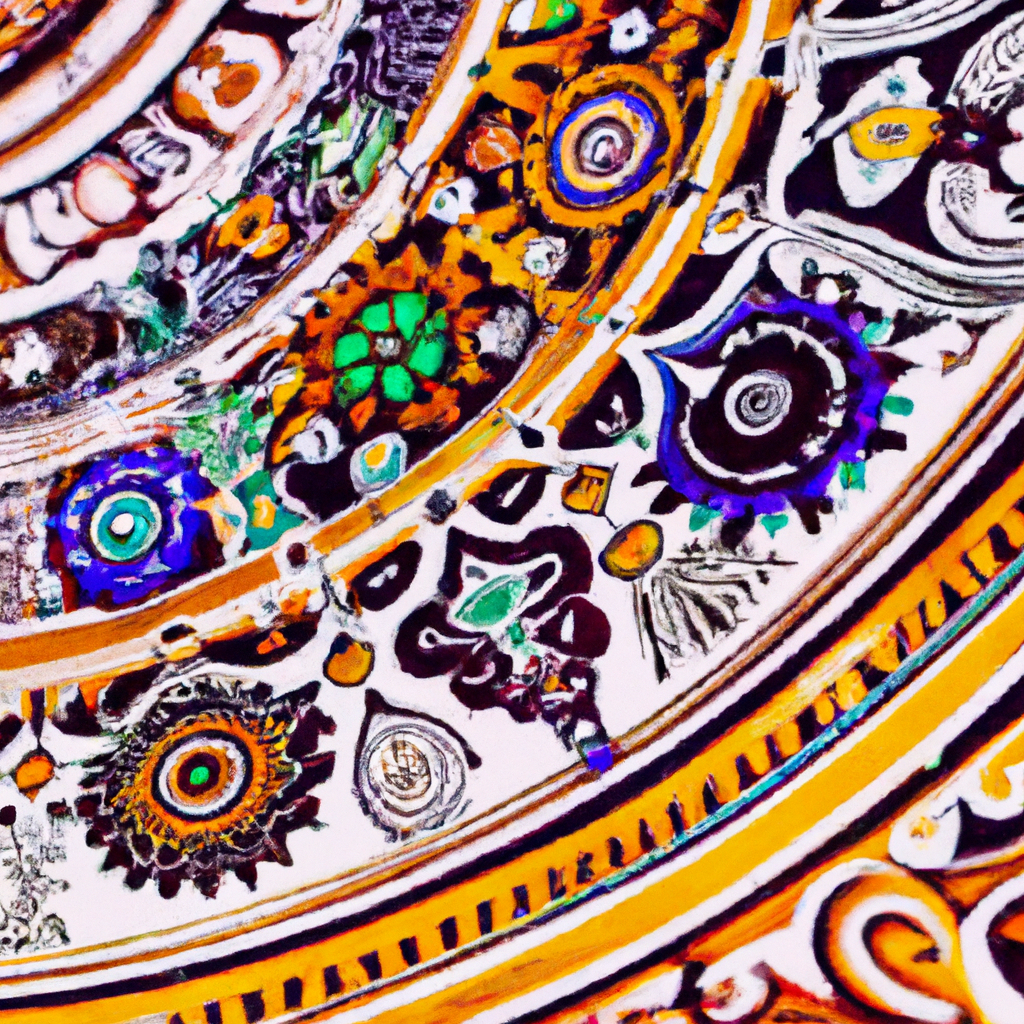The mandala is a spiritual and artistic symbol that has been used for centuries in various cultures. This circular design features intricate patterns and symbols that represent the universe, the self, and the divine. In this article, we will explore the history and significance of the mandala in art and culture, and how it has evolved over time.
History of the Mandala
The word “mandala” is derived from Sanskrit, meaning “circle” or “discoid object.” The earliest known mandalas were created by Hindu and Buddhist practitioners in India over 2,000 years ago. These mandalas were used for meditation and as a tool for spiritual development.
In Hinduism, mandalas were used as a representation of the cosmos, with the center of the mandala representing the divine. In Buddhism, mandalas were used as a visual aid for meditation, with the intricate patterns and symbols helping to focus the mind and achieve a state of enlightenment.
As Buddhism spread throughout Asia, so too did the use of mandalas. Tibetan Buddhism, in particular, is known for its intricate mandalas, which are created using colored sand and can take weeks or even months to complete.
Significance of the Mandala
The mandala is a powerful symbol that represents wholeness, unity, and harmony. It is often used as a tool for meditation and spiritual development, as well as a means of artistic expression.
In Hinduism and Buddhism, the mandala represents the universe and the cycle of birth, death, and rebirth. It is also believed to be a representation of the self, with the center of the mandala representing the divine spark within all beings.
The intricate patterns and symbols found within the mandala are also significant. Each element of the mandala has a specific meaning, and these symbols are often used to represent different aspects of the universe or the self. For example, the lotus flower is often used to represent purity and enlightenment, while the eight-spoked wheel represents the Buddhist path to enlightenment.
The mandala is also a symbol of healing and transformation. Many modern therapists use mandalas as a tool for art therapy, as the act of creating a mandala can be a meditative and healing process.
Mandala Art
The mandala has been used as a source of inspiration for artists for centuries. In addition to traditional mandalas created for spiritual purposes, many artists have created their own interpretations of the mandala, incorporating different styles and mediums.
One of the most famous examples of mandala art is the sand mandala created by Tibetan Buddhists. These mandalas are created using colored sand, and the process of creating them is seen as a form of meditation. Once the mandala is complete, it is destroyed as a symbol of impermanence.
Other artists have created mandalas using different mediums, such as painting, sculpture, and even digital art. Some modern artists have even created mandalas using everyday objects, such as coffee cups or buttons, showcasing the versatility of this ancient symbol.
Conclusion
The mandala is a powerful symbol that has been used for centuries in various cultures. It represents wholeness, unity, and harmony, and is often used as a tool for meditation and spiritual development. The intricate patterns and symbols found within the mandala have specific meanings, and each element represents a different aspect of the universe or the self.
Throughout history, the mandala has been used as a source of inspiration for artists, and many have created their own interpretations of this ancient symbol. From traditional sand mandalas to modern digital art, the mandala continues to evolve and inspire people around the world.







